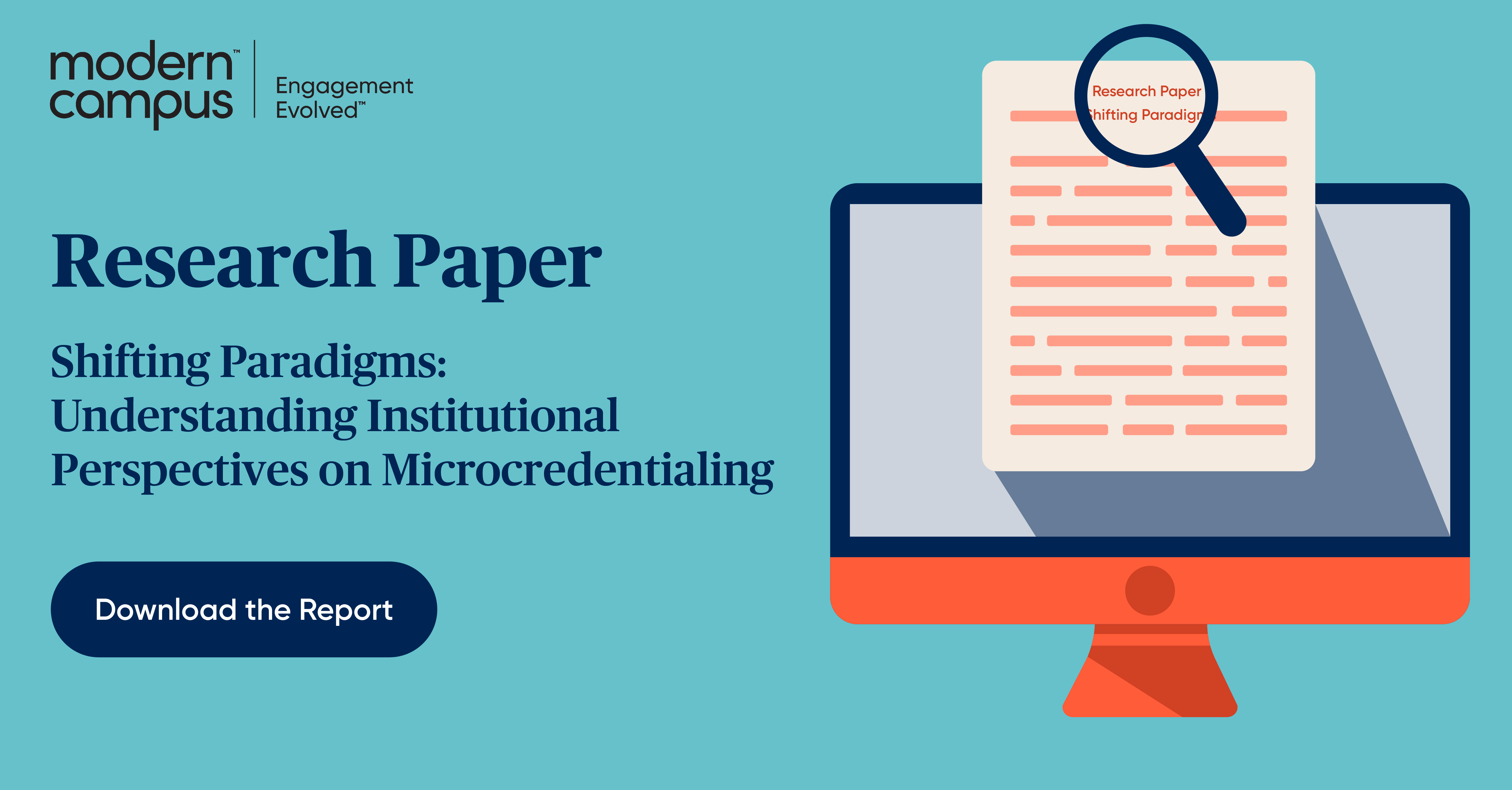Non-Degree Pathways a Viable Postsecondary Option for All Ages
Mid-career adults have always been the target audience for Continuing and Workforce Education divisions… but maybe it’s time to adopt a wider lens.
Recent research from Jobs for the Future and American Student Assistance looked at the perspectives of both employers and high school students on non-degree education and unearthed some fascinating findings.
Among Employers:
- 81% of employers think companies should hire based on skills—not degrees
- 72% said a degree is not a reliable signal of candidate quality
- 68% said companies should proactively hire candidates from non-degree pathways
Among High School Students:
- 74% of high schoolers want to learn skills that will prepare them for in-demand jobs
- 71% say high schools should do more to help students understand available non-degree education pathways
- 65% are worried about choosing the wrong postsecondary pathway
- 63% think a non-degree credential will help them get work
- 58% believe companies should hire more high school graduates who have pursued non-degree education
These are fascinating insights. They suggest the tide is shifting toward lifelong learning as higher ed’s next normal.
After all, not everyone needs a degree to get their career started. In fact, this focus on earning a degree no matter what has led to 41% of college graduates winding up underemployed—which can have severe long-term consequences.
So here are a few key takeaways for higher education leaders looking to adapt to the shifting needs of modern learners:
1. Make Programming Relevant to Learners
Higher ed’s experiencing massive enrollment declines in degree programming… but that doesn't mean people have less need for education than before.
In fact, the need for access to college-level learning is greater than ever. They just don’t prioritize the same kinds of programs they used to.
People are increasingly looking to the postsecondary sector to help them find pathways to sustainable jobs and careers.
College and university leaders should prioritize the development and marketing of high-quality non-degree programming so students have access to credentials to good jobs.
2. Make Labor Market Pathways of Programming Clear
Students and employers both highlighted the lack of information on non-degree programming as a major obstacle. Fortunately, this is a hurdle that’s easily overcome.
College and university leaders should explore career pathway tools that draw out the labor market value of the various courses and programs they offer. This means providing key data like potential career direction, relevant job openings in a student’s chosen geographic area, and average salaries in the field.
The modern learner is a consumer; this kind of data will help them make informed decisions.
3. Make it Easier for Students to Return
Non-degree programming can serve as an enrollment pipeline for degree programming… if leaders allow it to be!
For institutional leaders, it’s critical to look at the linkages between existing (and upcoming!) non-degree offerings to establish a clear view on how those programs can transfer into credit-bearing offerings.
This way, students have access to the credentials they need to start their career… and then, when they need to earn a degree to climb the ladder, they have a pathway back to the institution that helps them avoid starting from scratch.
This way, the student progresses toward the credential they need when they need it, and the institution builds capacity to serve students over a longer period of time.
What’s more, the college is showing the student it can be an effective partner in that learner’s career journey. As a result, the student will continue to come back to their college first whenever they need access to ongoing learning—repeating the cycle.
It’s a win-win!
4. It Doesn’t Have to Be Hard
The great thing about this is that it doesn't have to be hard. The vast majority of colleges and universities already have Continuing and Workforce Education divisions offering a wide range of high-quality non-degree programming designed specifically to help students achieve their career goals.
These divisions have historically focused on serving mid-career adults, but maybe it’s time to look at how these offerings can be used to serve younger demographics too.
After all—both employers and high schoolers say this is what they want!
Last updated: August 9, 2022




